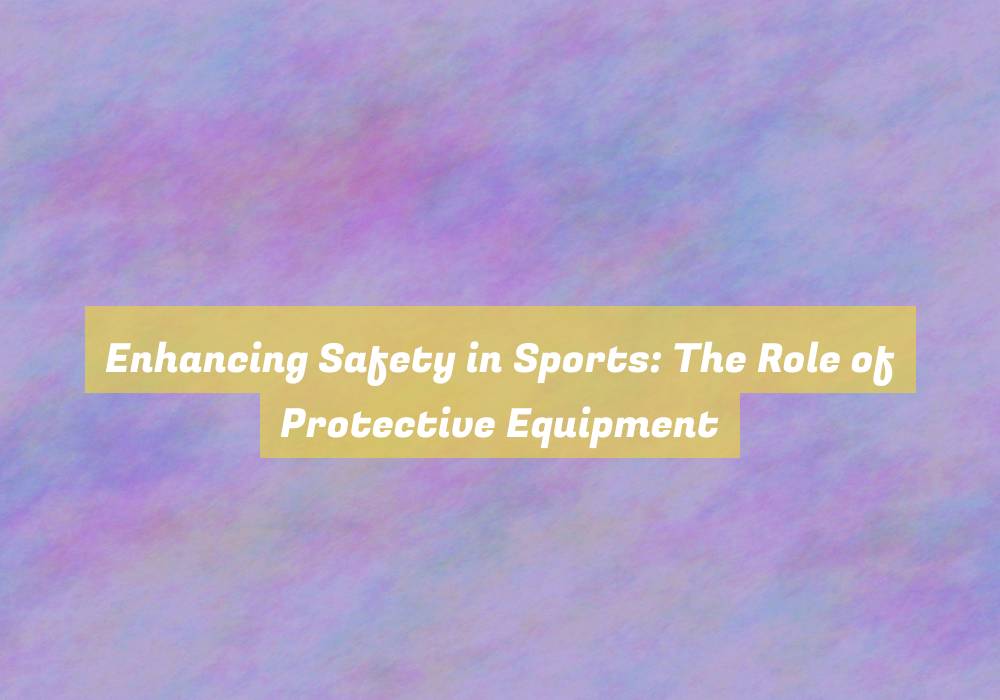Enhancing Safety in Sports: The Role of Protective Equipment
You may not realize that the effectiveness of protective equipment in sports goes beyond just preventing minor injuries.
The role of protective gear is constantly evolving to keep up with the latest advancements in technology and injury prevention.
From the impact of material science to the importance of proper fit, there are key factors that contribute to the overall safety of athletes.
But what exactly are these factors, and how do they impact the future of sports equipment?
Evolution of Protective Gear
The evolution of protective gear in sports has significantly improved the safety and performance of athletes. Over the years, advancements in materials and technology have revolutionized the design and effectiveness of protective equipment. For instance, in football, the traditional leather helmets have been replaced by modern, shock-absorbing helmets that significantly reduce the risk of head injuries.
Similarly, in baseball, the introduction of batting helmets has drastically reduced the incidence of head injuries caused by errant pitches.
Additionally, advancements in padding and body armor have made sports like ice hockey and lacrosse much safer for participants. The use of lightweight yet durable materials hasnG??t only enhanced protection but also allowed athletes to move more freely, ultimately improving their performance.
Moreover, innovations in sports medicine have led to the development of specialized protective gear tailored to individual athletesG?? needs, further reducing the risk of injuries.
Impact of Technology on Safety
With constant advancements in technology, sports safety equipment has undergone significant improvements. The impact of technology on safety in sports canG??t be overstated. Innovations such as impact-absorbing materials, advanced helmet designs, and smart protective gear have revolutionized the way athletes are protected during play.
For instance, the use of materials like D3O, which are flexible and soft in their natural state but harden upon impact, has greatly enhanced the protective capabilities of equipment. Additionally, smart technology integrated into protective gear, such as sensors that can detect and analyze impacts in real-time, provides valuable data for injury prevention and improved design.
Furthermore, advancements in 3D printing have allowed for custom-fit equipment that provides better protection and comfort for athletes. These technological advancements not only enhance safety but also contribute to the overall performance and confidence of athletes.
As technology continues to evolve, the future holds even more promising developments in sports safety equipment, ensuring that athletes can compete with reduced risk of injury.
Importance of Proper Fit
Ensuring that protective equipment fits properly is crucial for maximizing its effectiveness in safeguarding athletes during sports activities. Ill-fitting gear can lead to serious injuries, diminishing the very purpose of its existence. When equipment is too loose, it can shift or fall off during movement, leaving vulnerable areas exposed to potential harm. Conversely, if itG??s too tight, it can restrict movement and circulation, causing discomfort and impairing performance.
Properly fitted gear, on the other hand, stays securely in place without inhibiting movement, providing the necessary protection without compromising agility.
To ensure a proper fit, itG??s important to carefully follow the manufacturerG??s guidelines for sizing and adjustment. Additionally, seeking professional guidance, such as a certified equipment manager or sports gear expert, can be invaluable in ensuring that the equipment is tailored to your specific needs. Furthermore, periodically reassessing the fit of the gear is essential, as changes in body shape or equipment wear can impact its effectiveness over time.
Future Trends in Sports Equipment
Innovations in sports equipment design and technology are shaping the future of athletic performance and safety. As technology continues to advance, the future of sports equipment looks promising.
One of the key trends is the development of smart materials that can adapt to different impact levels, providing customized protection for athletes. These materials can adjust their stiffness and impact absorption properties based on the specific forces they experience, offering enhanced safety without compromising performance.
Furthermore, the integration of wearable technology in sports equipment is gaining traction. From smart helmets that can detect and report potential concussions to sensors embedded in padding to monitor impact forces, these advancements aim to provide real-time data to athletes, coaches, and medical staff. This data can help in identifying potential injury risks and optimizing training and recovery strategies.
Moreover, 3D printing is revolutionizing the customization of sports equipment. This technology allows for the creation of personalized gear tailored to an individual athleteG??s body shape and playing style, maximizing comfort, fit, and performance while minimizing the risk of injury.
Conclusion
So, when it comes to enhancing safety in sports, protective equipment plays a crucial role. With the evolution of gear and advancements in technology, athletes can now rely on better protection.
The key is to ensure that the equipment fits properly to provide the best possible safety measures. And as technology continues to advance, the future of sports equipment looks promising for the safety of athletes.




